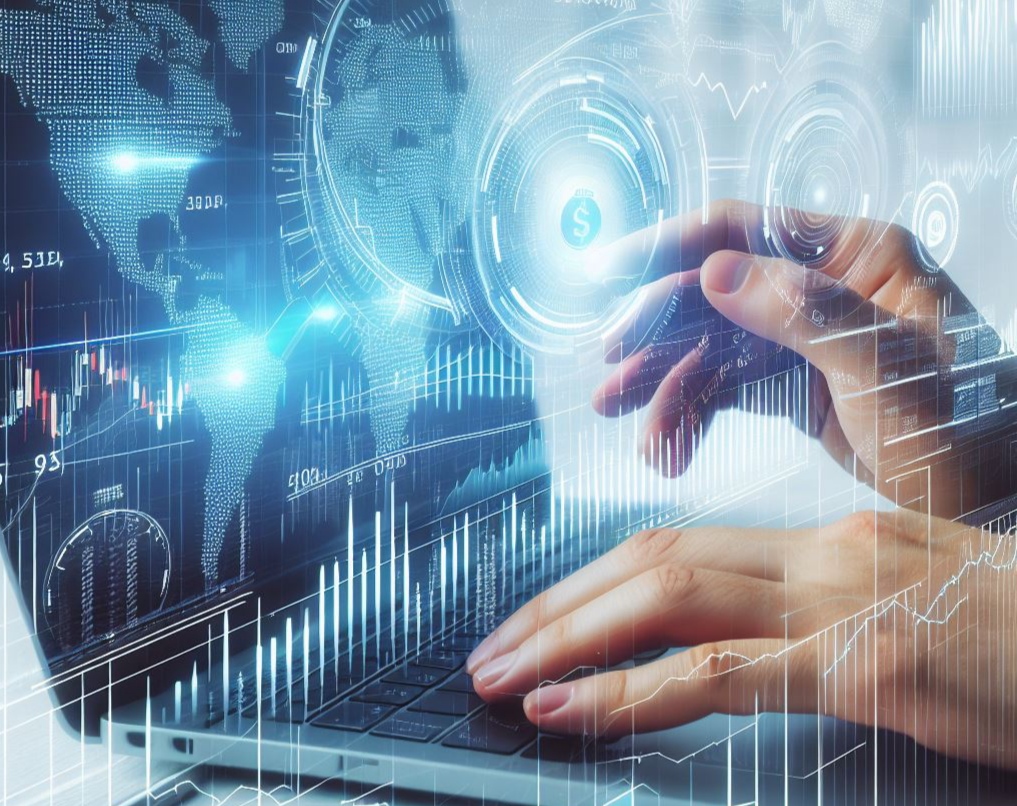The Role of Technology in Transforming the Foreign Exchange Market: How Automation is Changing Currency Trading

Introduction
The foreign exchange market, also known as the forex market, is the most liquid in the world, with over $4 trillion traded every day.
It’s a market where different countries’ currencies are exchanged for one another.
This is possible because international trade and fluctuating currency rates created a loophole for speculators to hold and sell different currencies for profit. Now, technology has made it better.
Since computer monitors were introduced to replace telephones and telex machines used for trading quotes in 1973, technology has continued to evolve and integrate into forex trading.
With recent advancements in technology, this trend has only become more prominent.
Today, technology is an integral part of the foreign exchange market, with automation becoming a greater part.
Evolution of Technology in Currency Trading
Currency trading is perhaps as old as mankind itself.
Human civilization started with the barter system, where people exchanged goods and services to meet needs.
The moment humans created currencies as a means of exchange, currency trading began.
However, It wasn’t popular until the Medici family, who founded the Medici Bank, the largest bank in Europe during the 15th century, opened banks in foreign locations to exchange currencies on behalf of textile merchants.
With this creation, they started exchanging one currency directly for another to help merchants manage transactions.
Moving forward, the modern forex market started with the emergence of the Amsterdam Stock Exchange in the 17th century, it became one of the world’s earliest formal stock exchanges.
Traders would gather in person at designated locations, often coffeehouses, to conduct transactions involving securities, commodities, and currencies, like is done in traditional market settings.
Likewise, the London Stock Exchange, established much later, was an important financial hub in England and beyond.
Traders frequented coffeehouses such as Jonathan’s Coffee-House to conduct business and exchange currencies.
These informal meeting spots provided a platform for traders to exchange information, strike deals, and keep abreast of market trends.
Communication played a vital role in these historical trading settings. Traders relied on letters, messengers, and face-to-face interactions to execute trades and share information.
With no electronic screens or computers to display prices, they employed gestures, verbal agreements, and written contracts. Analysis and decision-making followed a different approach as well.
Traders depended on their intuition, market expertise, and information gleaned from newspapers, letters, and word of mouth to make trading decisions.
Technical indicators and elaborate charts were nonexistent; instead, traders focused on understanding market fundamentals and predicting future trends based on prevailing economic conditions and events.
In all this, the forex market was not matured like it is today, as most countries pegged their currencies against gold beginning from the 1870s.
Technology later came into forex, starting with digital monitors and better and more efficient ways of quoting prices. The invention of the internet made things much better.
Technical indicators became a thing, as computers were now used to aggregate historical data to establish different patterns. However, the forex market didn’t get bigger until the end of the Gold standard.
In 1971, President Nixon ended the gold standard, ending the convertibility of the US dollar for gold. This put the US dollar under a free float, and other currencies followed suit.
Now, a country’s currency becomes largely determined by free market forces, meaning the price swings become bigger than when pegged.
Many investment companies sprung up to take advantage of this opportunity, leveraging modern technologies.
The famous George Soros short of the British currency in 1992, where his firm shorted the Pound, and made over $1 Billion ($2.1 Billion adjusted for inflation), opened people to the potential of technology in the forex market.
People suddenly realized how profitable forex trading could be if done with modern tools, resulting in more funds and traders trooping into the market.
Key Technological automation Shaping the Forex Market
Algorithmic trading and high-frequency trading (HFT):
Algorithms are sets of instructions coded into executable tasks. With the prevalence of electronic trading, big companies now employ algorithms to take advantage of market loopholes immediately they appear.
For instance, imagine a country with a struggling economy suddenly embroiled in political unrest. These algorithms, which are bots, act immediately when the event filters into the news.
They may dump the country’s currency or take a short position to profit from the likely fall of the currency, as coded in their programs. Algorithmic trading is automation.
On the other hand, high-frequency trading combines complex algorithms and proximity to exchange servers to execute trades at incredibly high speeds, exploiting tiny price changes for little profits, which accumulates over time. It is usually costly to set up, but when done facilitates swift execution and processes vast amounts of data in milliseconds.
Artificial intelligence (AI) and machine learning:
Artificial intelligence (AI) and machine learning are new technologies gaining ground in forex trading.
AI algorithms are now used in forex trading to scan through vast datasets within seconds, unravelling hidden patterns and subtle trends that elude the human eye.
With insane scanning abilities and fast accuracy, they reveal insights about fast-changing market sentiments, which can reveal previously unknown trading opportunities.
Machine learning algorithms enable these artificial intelligence programs to learn from their successful trades and take lessons from the ones they lost. Just like humans taking lessons from one mistake getting better, they adapt and improve over time, enhancing their predictive capabilities, and taking forex trading automation to another level.
Benefits of Automation in Currency Trading:
Increased efficiency and accuracy: Automation has greatly improved the currency trading market by streamlining the trading process and enabling faster execution of trades, which reduces latency in transaction times.
Unlike in-person trading in noisy rooms where brokers shout buy/sell orders across to each other, trades are now executed immediately they are placed.
Reduced human error: Automated systems execute trades based on pre-defined rules and parameters, minimizing the potential for human errors such as emotional biases or manual input mistakes. This saves time and reduces the risk of costly errors.
Expanded accessibility to retail traders: Automation enables retail traders to access the forex market more easily.
Software like Metatrader4 has provided automated trading platforms and algorithms, levelling the playing field with institutional traders.
Improved risk management processes: Automated systems can incorporate risk management protocols and analyze market data in real-time, aiding traders in making more informed decisions and mitigating potential losses.
This helps traders manage their risk more effectively and make better decisions. Stop loss and lot size are possible thanks to these automations.
Challenges of Automation in the Forex Market
Regulatory Challenges: Trading algorithms can be used to manipulate the forex market, leaving regulators to face the challenge of developing and enforcing regulations to ensure the fair and orderly operation of automated trading systems.
Addressing concerns such as market manipulation and algorithmic trading risks is crucial for maintaining market integrity, and keeping retail traders safe.
Over-reliance on Technology: Over-reliance on automated systems can lead to technical failures or glitches, potentially causing significant financial losses or disruptions in the market.
As such, it’s essential to maintain a balance between automation and human intervention for optimal trading outcomes.
Regular testing, monitoring and audit of automated systems is necessary to ensure they are performing as expected.
Additionally, traders should be educated on the risks of automated trading so they can make informed decisions.
Ethical Considerations: Algorithmic trading raises ethical concerns regarding its impact on market fairness, transparency, and the potential for exacerbating market volatility.
It’s crucial to ensure that the use of automated trading systems is ethical and aligns with the principles of fair and transparent trading, as these systems are hardly available to retail traders because of the cost implication.
Conclusion
In conclusion, while technology has undeniably revolutionized the foreign exchange market, its impact on retail traders versus institutional players remains uneven.
Automation tools have indeed lowered the entry barrier, allowing retail traders access to platforms for executing trades.
However, the full spectrum of automation, including sophisticated algorithms, high-frequency trading, and AI-driven analysis of large datasets, is primarily accessible to institutional investment companies due to their substantial resources.
This discrepancy in access to automation tools often puts retail traders at a disadvantage, contributing to the commonly cited statistic that most retail traders lose money in currency trading.
Despite the availability of retail platforms, the lack of resources and expertise to create trading algorithms or engage in high-frequency trading limits the extent to which retail traders can benefit from automation.
However, there is hope on the horizon. As artificial intelligence continues to advance, there is optimism that AI-driven platforms will become more accessible and affordable for retail traders.
These platforms could empower retail traders to create their algorithms, leverage high-frequency trading techniques, and harness the power of AI to analyze large datasets for making informed trades. This will level the playing field.
In the future, the democratization of automation tools through AI-driven platforms could help bridge the gap between retail traders and institutional players in the forex market.
When newer automation technologies provide retail traders with the tools and resources needed to compete effectively, they transform the landscape of currency trading and improve the prospects of retail traders.
If you are a currency trader, and need access to modern AI tools, CI Cryptosolutions has an array of tools to bring the best out of your trading.

Akeju Abiola .F. is a seasoned technical writer with over 5 years of experience in blockchain and AI. He shares valuable insights and expertise in these fields, along with data analytics and other related topics, aiming to educate and inform readers about the transformative potential of these technologies across various industries.
